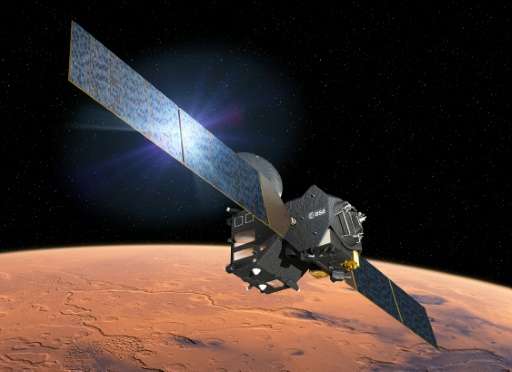Europe's Mars lander: What do we know?

Scientists and engineers were piecing together clues Thursday to the fate of Europe's "Schiaparelli" Mars lander, which fell silent just seconds before its scheduled touchdown on the Red Planet.
Some are holding out hope, but initial data suggests the craft, a test-run for a European-Russian Mars rover, ran into trouble.
What European Space Agency (ESA) experts have gleaned so far from data Schiaparelli sent home:
Known:
Schiaparelli is on Mars.
Not known:
Where exactly, in how many pieces, or whether it is "awake".
Known:
Schiaparelli entered Mars' outer atmosphere at 1442 GMT on Wednesday, as scheduled, for what should have been a six-minute dash to the surface.
Not known:
Where the lander was when its signal dropped out, about 50 seconds before scheduled touchdown.
Known:
The first tool in Schiaparelli's defence arsenal, a shield against the scorching heat generated by atmospheric drag, had worked. If not, the next phase—deployment of a supersonic parachute, would not have happened.
Not known:
Why the shield, with parachute attached, seems to have been jettisoned too early.
Known:
The parachute deployed.
Not known:
Whether the parachute was discarded too early, or somehow malfunctioned so that the lander was already too close to the surface when its rocket brakes kicked in.
Known:
The third piece of protective hardware, speed-breaking retro-rockets did fire but only for three or four seconds—"much shorter than what we were expecting," according to European Space Agency (ESA) head of solar and planetary missions Andrea Accomazzo.
Not known:
Whether all nine rockets fired.
Known:
Schiaparelli has onboard batteries designed to last at least four sols (a sol is a Mars days of about 24 hours and 40 minutes), and at up to 10 or 12 sols.
Not known:
If it is intact and switched on, Schiaparelli is consuming battery power, which means time could be running out for mission controllers to try and make contact via its transceiver—a device that can transmit and receive messages.
The lander was designed to prepare for a bigger and more expensive rover set for launch in 2020, and ESA officials insist that even a crashlanding would yield important lessons.
"The test is there to get data, to get some knowledge, and we got the knowledge, we got the data," said ESA director general Jan Woerner.
Further analysis of the information gleaned should allow for a full reconstruction of events, added Accomazzo, though this could take some time.
© 2016 AFP





















